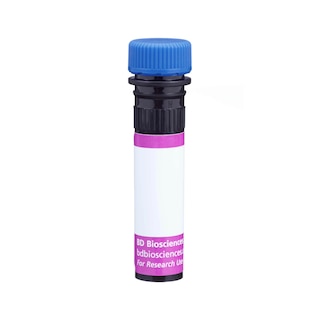-
Reagents
- Flow Cytometry Reagents
-
Western Blotting and Molecular Reagents
- Immunoassay Reagents
-
Single-Cell Multiomics Reagents
- BD® OMICS-Guard Sample Preservation Buffer
- BD® AbSeq Assay
- BD® OMICS-One Immune Profiler Protein Panel
- BD® Single-Cell Multiplexing Kit
- BD Rhapsody™ ATAC-Seq Assays
- BD Rhapsody™ Whole Transcriptome Analysis (WTA) Amplification Kit
- BD Rhapsody™ TCR/BCR Next Multiomic Assays
- BD Rhapsody™ Targeted mRNA Kits
- BD Rhapsody™ Accessory Kits
-
Functional Assays
-
Microscopy and Imaging Reagents
-
Cell Preparation and Separation Reagents
-
- BD® OMICS-Guard Sample Preservation Buffer
- BD® AbSeq Assay
- BD® OMICS-One Immune Profiler Protein Panel
- BD® Single-Cell Multiplexing Kit
- BD Rhapsody™ ATAC-Seq Assays
- BD Rhapsody™ Whole Transcriptome Analysis (WTA) Amplification Kit
- BD Rhapsody™ TCR/BCR Next Multiomic Assays
- BD Rhapsody™ Targeted mRNA Kits
- BD Rhapsody™ Accessory Kits
- United States (English)
-
Change country/language
Old Browser
This page has been recently translated and is available in French now.
Looks like you're visiting us from {countryName}.
Would you like to stay on the current country site or be switched to your country?




Multicolor flow cytometric analysis of CD49b expression on mouse splenocytes. Splenic leucocytes from a C57BL6/J mouse were stained with PE Mouse Anti-Mouse NK1.1 antibody (Cat. No. 553165/557391/561046) and either BD Horizon™ BV421 Rat IgM, κ Isotype Control (Cat. No. 562708, Left Panel) or BD Horizon™ BV421 Rat Anti-Mouse CD49b antibody (Cat. No. 563063, Right Panel). Two color flow cytometric dot plots showing the expression CD49b (or Ig Isotype control staining) versus NK1.1 were derived from gated events with the forward and side light-scatter characteristics of viable splenocytes. Flow cytometry was performed using a BD™ LSR II Flow Cytometer System.


BD Horizon™ BV421 Rat Anti-Mouse CD49b

Regulatory Status Legend
Any use of products other than the permitted use without the express written authorization of Becton, Dickinson and Company is strictly prohibited.
Preparation And Storage
Product Notices
- Since applications vary, each investigator should titrate the reagent to obtain optimal results.
- Source of all serum proteins is from USDA inspected abattoirs located in the United States.
- An isotype control should be used at the same concentration as the antibody of interest.
- Please refer to www.bdbiosciences.com/us/s/resources for technical protocols.
- Caution: Sodium azide yields highly toxic hydrazoic acid under acidic conditions. Dilute azide compounds in running water before discarding to avoid accumulation of potentially explosive deposits in plumbing.
- For fluorochrome spectra and suitable instrument settings, please refer to our Multicolor Flow Cytometry web page at www.bdbiosciences.com/colors.
- Pacific Blue™ is a trademark of Molecular Probes, Inc., Eugene, OR.
- Brilliant Violet™ 421 is a trademark of Sirigen.
Companion Products





The rat anti-mouse CD49b monoclonal antibody (clone DX5) specifically binds to the integrin α2 chain (CD49b). CD49b is a 150 kDa transmembrane glycoprotein that non-covalently associates with CD29 (integrin β1) to form the integrin α2β1 complex known as VLA-2. The rat anti-mouse CD49b antibody (clone DX5) has been reported to identify the majority of NK cells and a small T-cell subpopulation in most mouse strains (e.g., A/J, AKR, BALB/c, C3H/HeJ, C57BL/6, C57BL/10, C57BR, C58, CBA/Ca, DBA/1, DBA/2, SJL, SWR, 129/J, but not NOD). The DX5 antibody also recognizes platelets that express high levels of CD49b. Multiparameter flow cytometric analysis has demonstrated that most lymphocytes which express NK-1.1 (NKR-P1B and NKR-P1C), as detectable by mouse anti-mouse NK-1.1 antibody (clone PK136), also express the DX5 antigen. Small DX5+ NK-1.1- and DX5- NK-1.1+ cell subsets are found, especially among the CD3-positive cell population. Some CD49b+ NK cells have been reported to gradually lose reactivity with the rat anti-mouse CD49b antibody (clone DX5) when cultured in the presence of recombinant human IL-2. The resulting DX5-negative cells have weakened cytotoxic activity when compared to the remaining DX5+ cells. This indicates that the DX5 antibody distinguishes functional subsets of NK cells. No activation or blocking activity of the rat anti-mouse antibody (clone DX5) has been observed. Staining of splenic NK cells with this antibody reportedly can be blocked by hamster anti-mouse CD49b antibody (clone HMα2).
The antibody was conjugated to BD Horizon™ BV421 which is part of the BD Horizon™ Brilliant Violet™ family of dyes. With an Ex Max of 407-nm and Em Max at 421-nm, BD Horizon™ BV421 can be excited by the violet laser and detected in the standard Pacific Blue™ filter set (eg, 450/50-nm filter). BD Horizon™ BV421 conjugates are very bright, often exhibiting a 10 fold improvement in brightness compared to Pacific Blue™ conjugates.

Development References (4)
-
Abrams J. Personal Communication. .
-
Arase H, Saito T, Phillips JH, Lanier LL. Cutting edge: the mouse NK cell-associated antigen recognized by DX5 monoclonal antibody is CD49b (alpha 2 integrin, very late antigen-2). J Immunol. 2001; 167(3):1141-1144. (Immunogen: Blocking, Cell separation, Cytotoxicity, Flow cytometry). View Reference
-
Moore TA, von Freeden-Jeffry U, Murray R, Zlotnik A. Inhibition of gamma delta T cell development and early thymocyte maturation in IL-7 -/- mice. J Immunol. 1996; 157(6):2366-2373. (Biology). View Reference
-
Ortaldo JR, Winkler-Pickett R, Mason AT, Mason LH. The Ly-49 family: regulation of cytotoxicity and cytokine production in murine CD3+ cells. J Immunol. 1998; 160(1):1158-1165. (Biology). View Reference
Please refer to Support Documents for Quality Certificates
Global - Refer to manufacturer's instructions for use and related User Manuals and Technical data sheets before using this products as described
Comparisons, where applicable, are made against older BD Technology, manual methods or are general performance claims. Comparisons are not made against non-BD technologies, unless otherwise noted.
For Research Use Only. Not for use in diagnostic or therapeutic procedures.